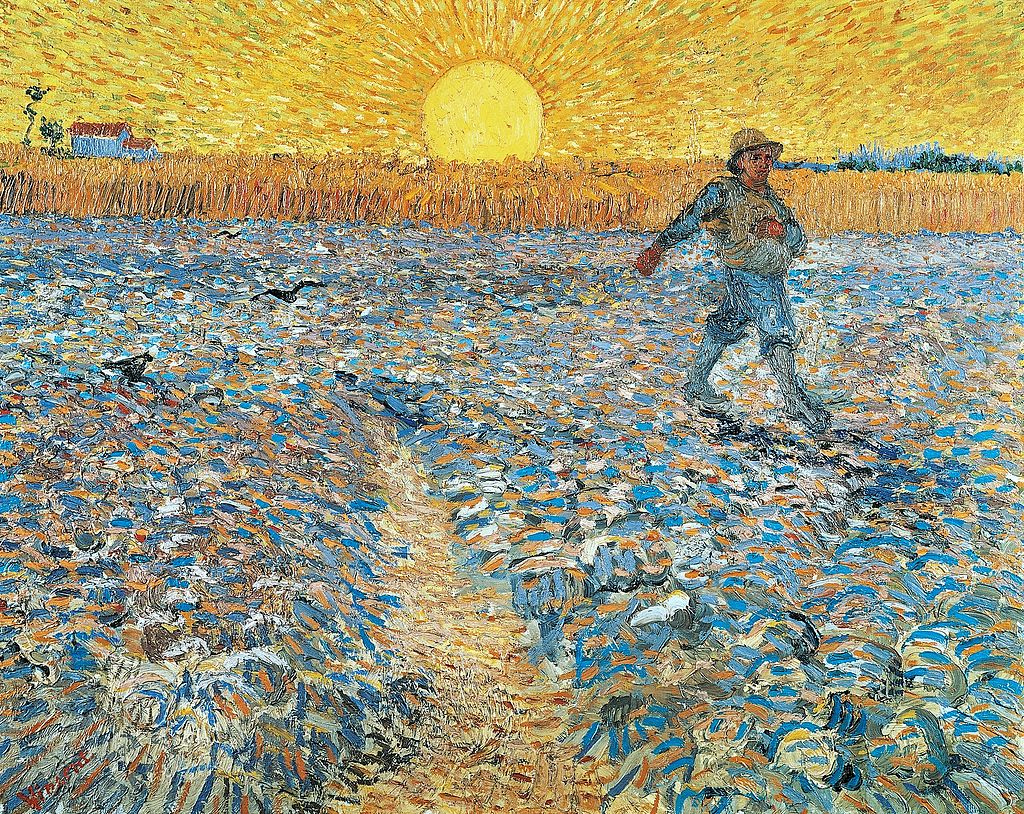
Van Gogh entered the Saint-Paul-de-Mausole asylum on 8 May 1889, accompanied by his caregiver, Frédéric Salles, a Protestant clergyman.
Saint-Paul was a former monastery in Saint-Rémy, located less than 30 kilometres (19 mi) from Arles, and was run by a former naval doctor,
Théophile Peyron. Van Gogh had two cells with barred windows, one of which he used as a studio.[163] The clinic and its garden became the main subjects of his paintings. He made several studies of the hospital's interiors, such as Vestibule of the Asylum and Saint-Rémy (September 1889). Some of his works from this time are characterised by swirls, such as The Starry Night. He was allowed short supervised walks, during which time he painted cypresses and olive trees, including Olive Trees with the Alpilles in the Background 1889, Cypresses 1889, Cornfield with Cypresses (1889), Country road in Provence by Night (1890). In September 1889 he produced two further versions of Bedroom in Arles.[164]
Limited access to life outside the clinic resulted in a shortage of subject matter. Van Gogh instead worked on interpretations of other artist's paintings, such as Millet's The Sower and Noonday Rest, and variations on his own earlier work. Van Gogh was an admirer of the Realism of Jules Breton, Gustave Courbet and Millet,[165] and he compared his copies to a musician's interpreting Beethoven.[166] His Prisoners' Round (after Gustave Doré) (1890) was painted after an engraving by Gustave Doré (1832–1883). Tralbaut suggests that the face of the prisoner in the centre of the painting looking towards the viewer is Van Gogh himself;[167] Jan Hulsker discounts this.[168] Between February and April 1890 Van Gogh suffered a severe relapse.
Depressed and unable to bring himself to write, he was still able to paint and draw a little during this time,[169] and he later wrote to Theo that he had made a few small canvases "from memory ... reminisces of the North".[170] Among these was Two Peasant Women Digging in a Snow-Covered Field at Sunset. Hulsker believes that this small group of paintings formed the nucleus of many drawings and study sheets depicting landscapes and figures that Van Gogh worked on during this time. He comments that this short period was the only time that Van Gogh's illness had a significant effect on his work.[171] Van Gogh asked his mother and his brother to send him drawings and rough work he had done in the early 1880s so he could work on new paintings from his old sketches.[172] Belonging to this period is Sorrowing Old Man ("At Eternity's Gate"), a colour study Hulsker describes as "another unmistakable remembrance of times long past".[91][173] His late paintings show an artist at the height of his abilities, according to the art critic Robert Hughes, "longing for concision and grace".[115]